Against Hertha Berlin, RB Leipzig put in an outstanding performance and controlled the opposition throughout the whole game. Ralf Rangnick’s side controlled central areas of the pitch, successfully stopped Berlin from playing out and created goalscoring opportunities by overloading the wings.
Hertha Berlin on the other hand struggled with their centrally-focused attacking approach as well as with a back three in defence. The following tactical analysis will lay out the reasons for Leipzig’s dominance in detail.
Lineups and formations
Ralf Rangnick lined his team up in a 4-3-1-2 formation with playmaker Emil Forsberg behind the strike duo of Yussuf Poulsen and Timo Werner. Former MLS player Tyler Adams played as a single pivot in front of Leipzig’s back four.
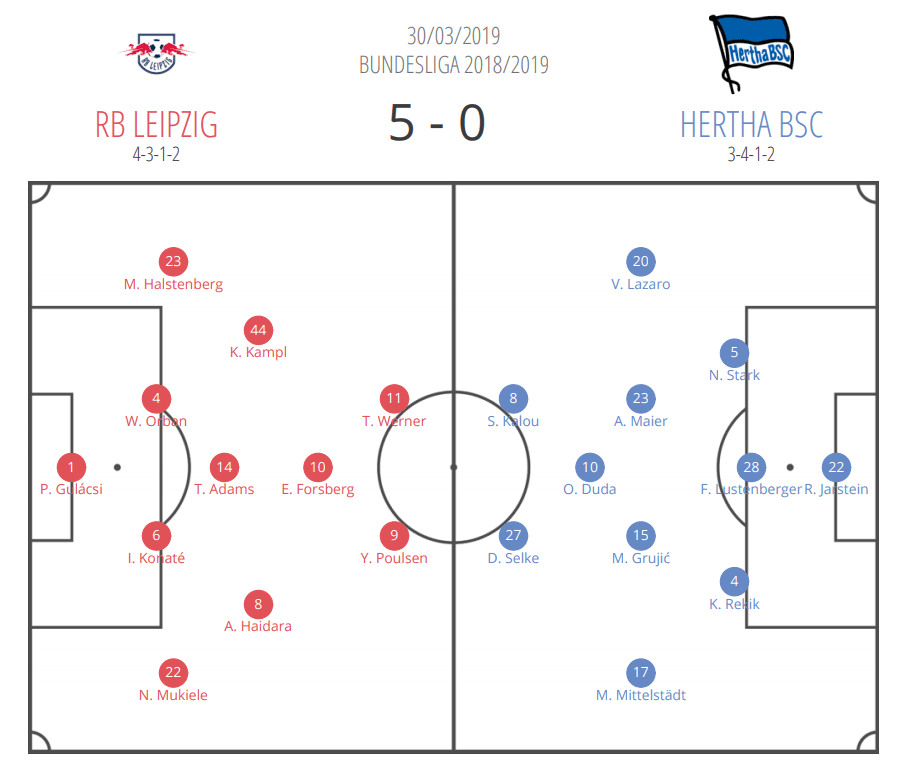
Leipzig’s press and Hertha’s problematic buildup
In buildup, Hertha used two central defenders while Lustenberger moved up into a single pivot position to provide a central passing option. As central midfielders Arne Maier and Marko Grujić moved into advanced positions, this created a diamond shape in Hertha’s midfield.
Since Leipzig pressed with four central midfielders as well, they were able to press Hertha man to man. RB Leipzig used a man-oriented approach within the opposition half to disrupt Hertha Berlin’s build-up. With this strategy, the home side forced Berlin into duels that mostly resulted in losses of the ball for Dárdai’s team.
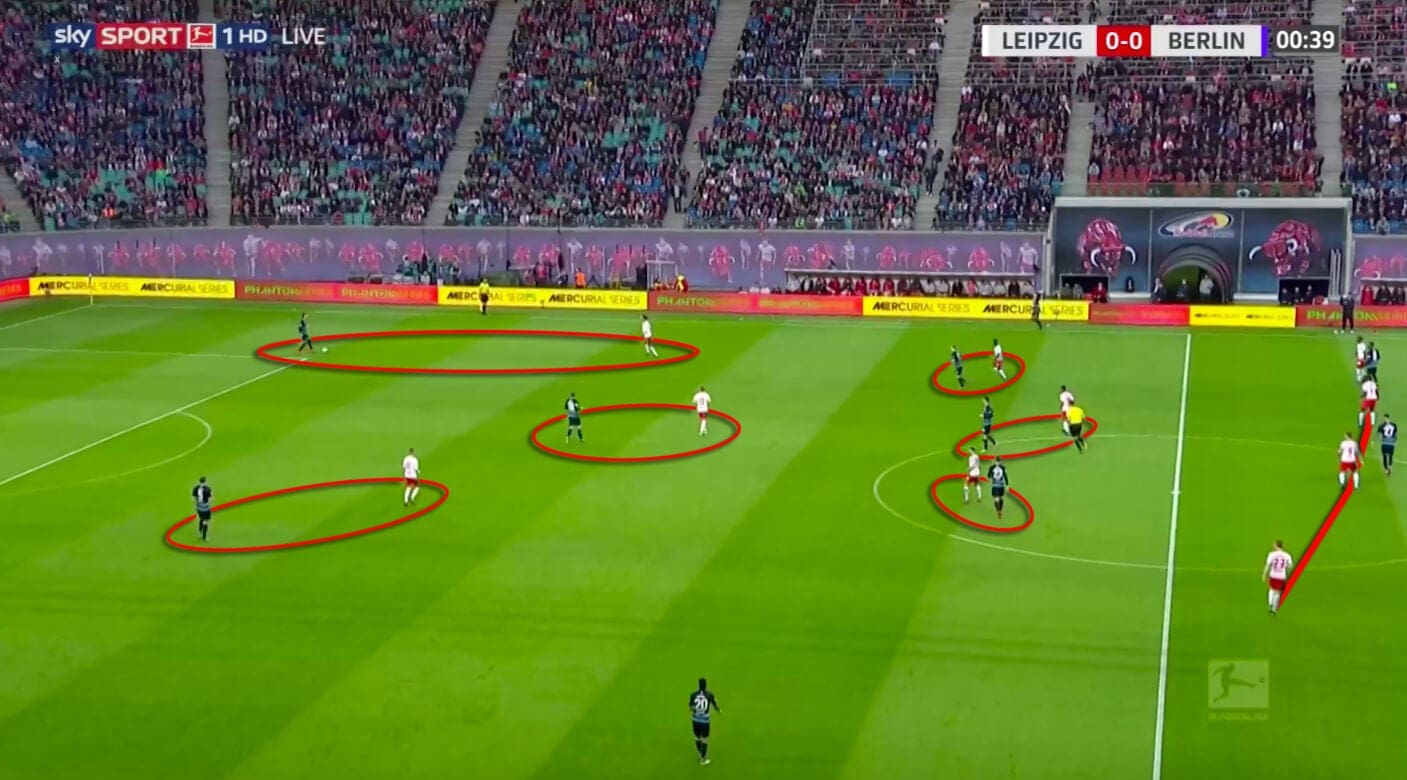
Leipzig were able to shut down all passing options whenever Berlin played to goalkeeper Rune Jarstein. As a consequence, the Norwegian was forced to play long balls. Since Hertha played most of their long balls towards either of their two strikers, they attempted to attack through central areas where Leipzig were superior.
Lustenberger was supposed the be the key player in Hertha’s build-up. Therefore, both central defenders positioned wider to allow Lustenberger to occasionally drop between them. The downside of this positioning was that Hertha needed to play back to goalkeeper Jarstein to switch play. Moreover, Berlin were not capable of closing the gap in transitional moments. That posed a high risk and enabled Leipzig to play through-balls on counter-attacks.
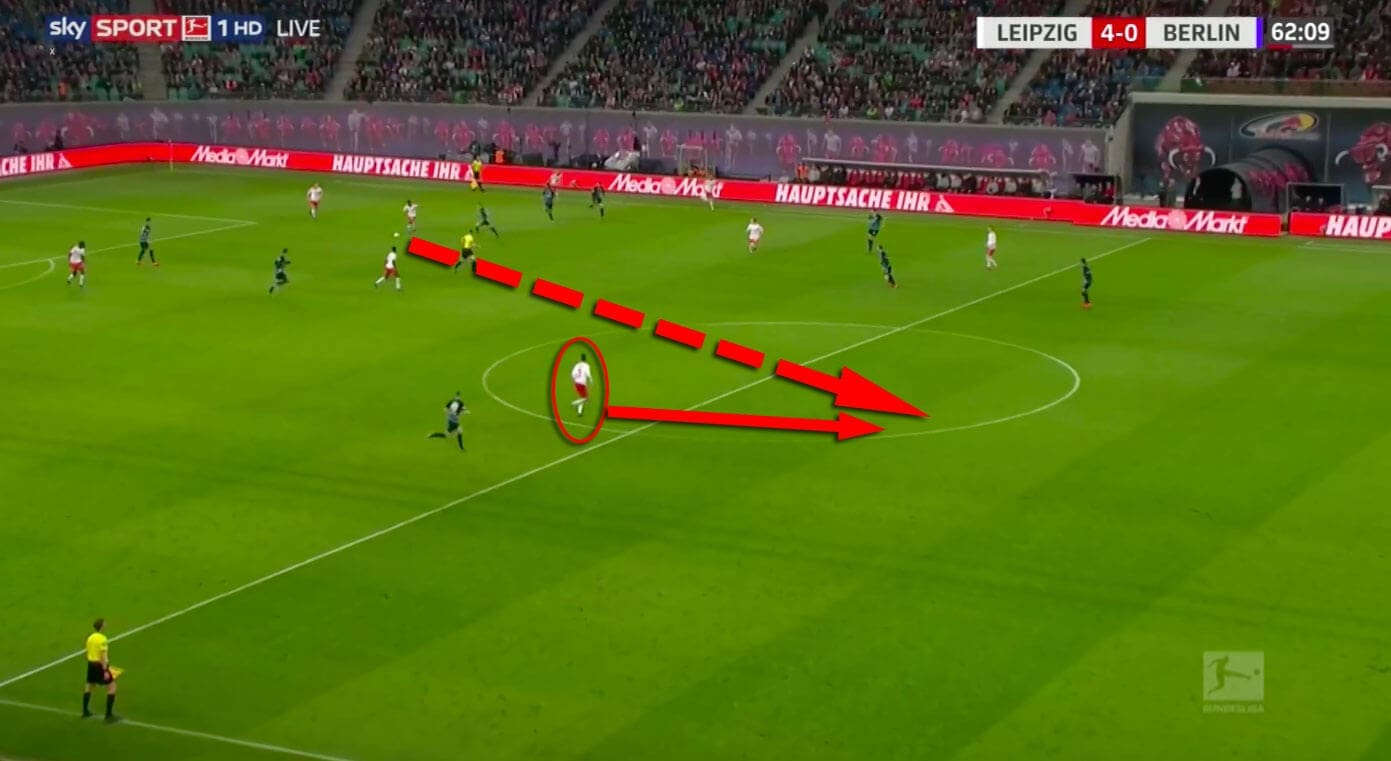
Furthermore, the positioning of Leipzig’s duo enabled fast counter-attacks. Since Werner and Poulsen marked the opposition central defenders who often lacked connection to each other, their wide positioning allowed them to diagonally run behind the last line of defence.
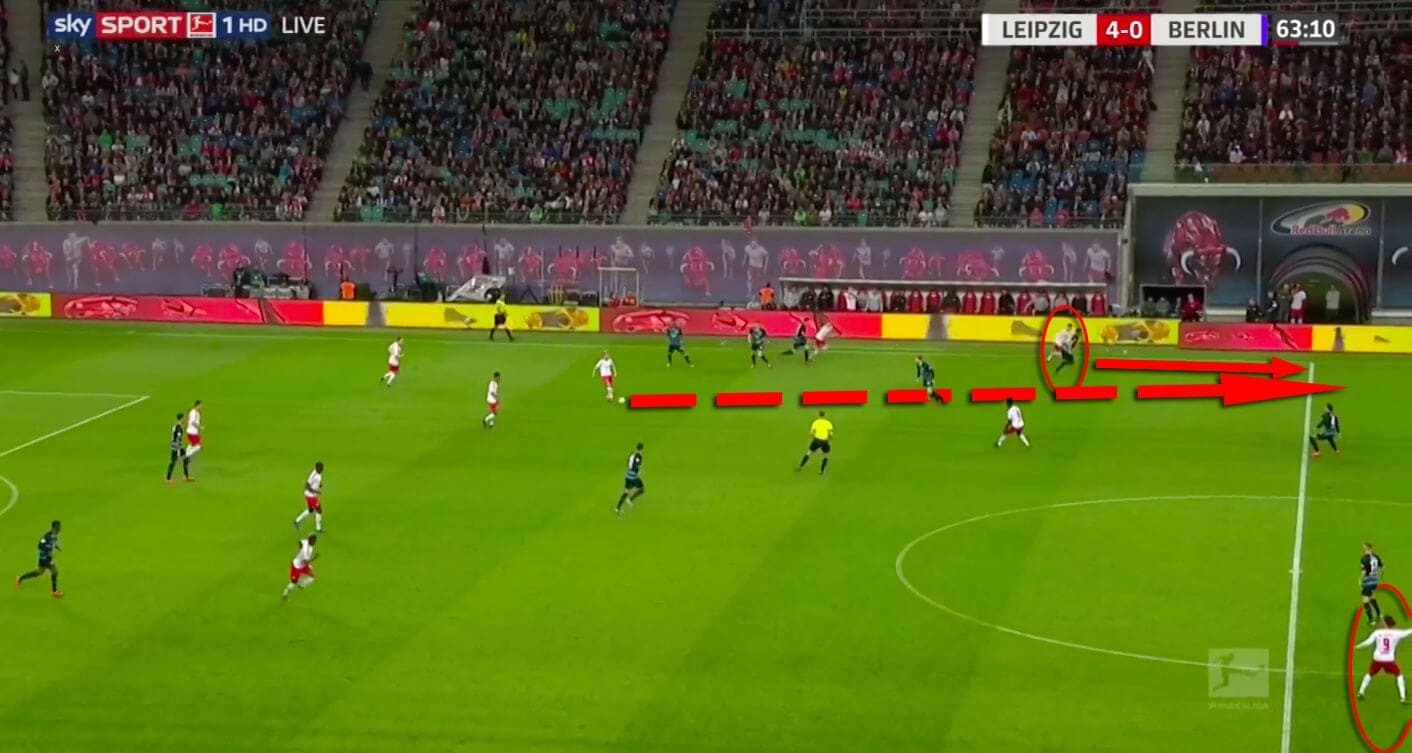
Leipzig control central spaces
One of the keys to Leipzig‘s dominance was their control over central areas of the pitch. Berlin attempted to attack through central areas on many occasions. However, this approach did not appear to be a promising one. As Leipzig kept a very compact shape with narrow positioned full-backs, they could outnumber Berlin in the centre.
Right-back Nordi Mukiele and left-back Marcel Halstenberg stayed close to the central defenders. Therefore, the centre-backs were enabled to move out of position and follow the opposition strikers when they dropped into midfield, as in the situation below.
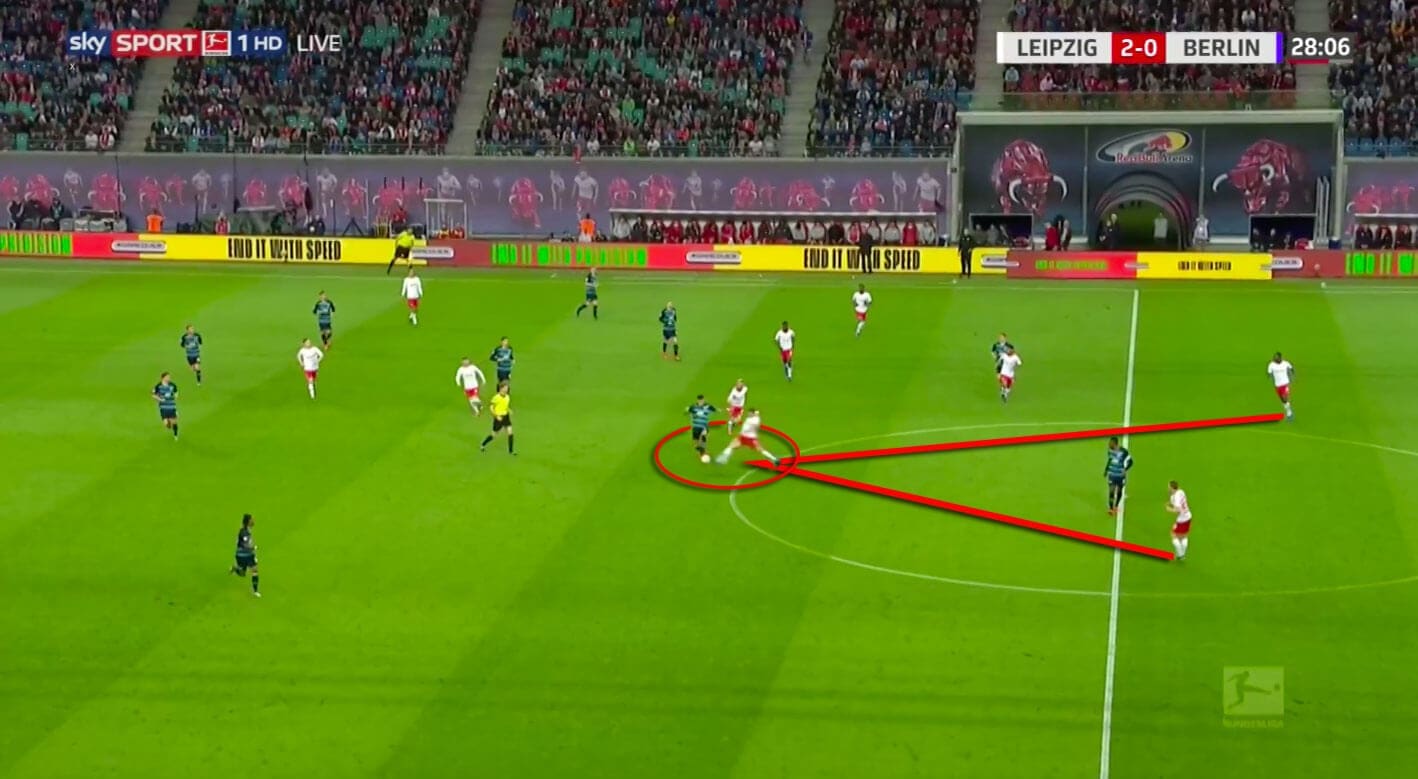
As this led to a high number of players in the centre, there was hardly any space to attack through central areas. Moreover, Hertha Berlin’s lack of penetrative power was also due to clever usage of cover-shadows by Leipzig’s midfielders.
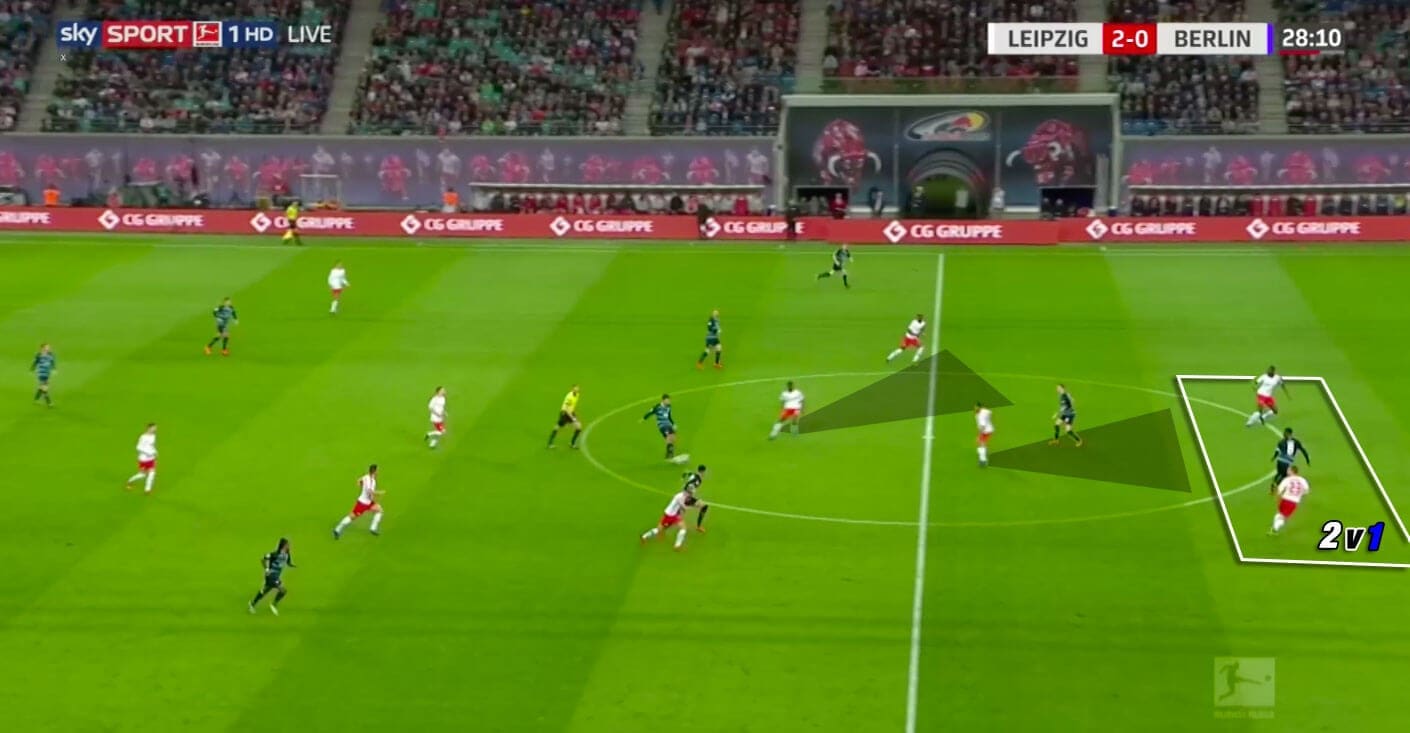
Overloads, narrow shape and quick combinations
The main concept of RB Leipzig’s attacking phase was to overload one side of the pitch.
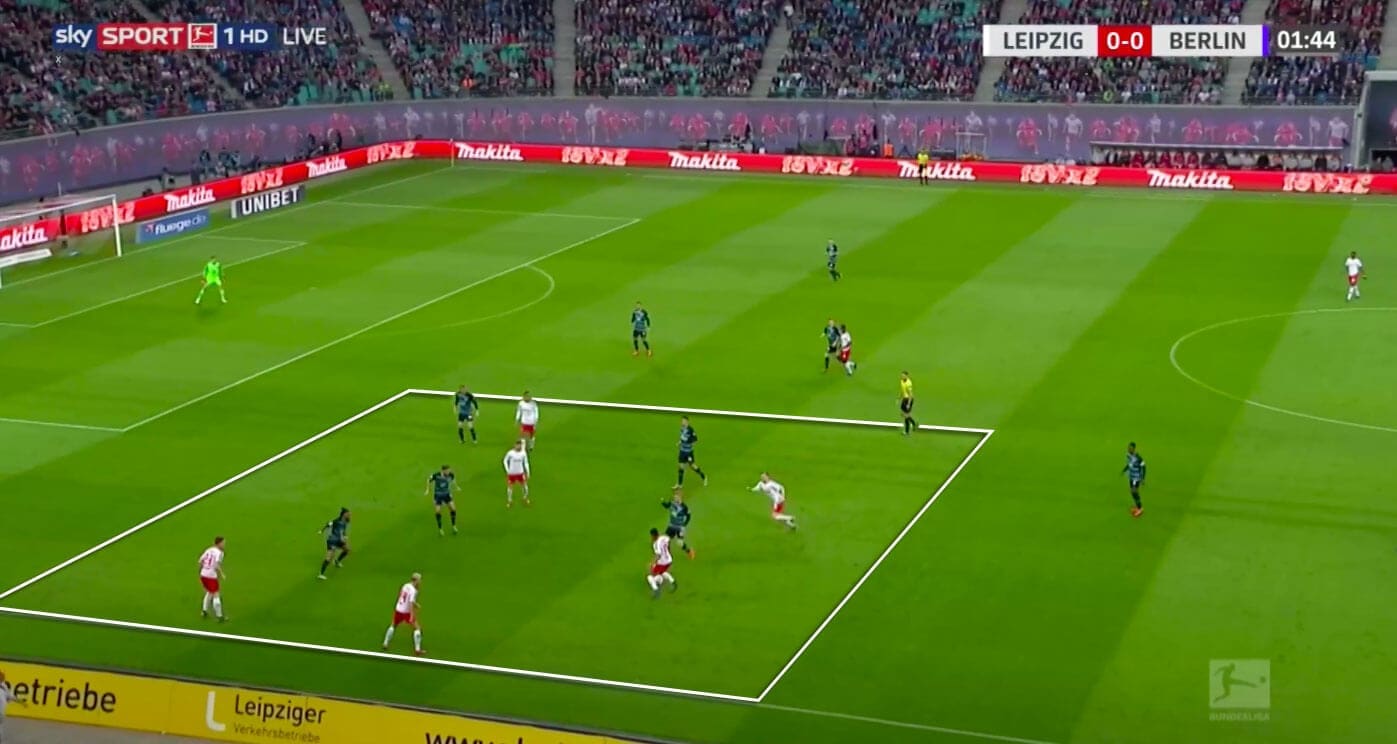
By doing this, they were able to use quick combinations in superior numbers to play their way out towards the opposition goal. By either breaking Hertha’s last line of defence on the wing or by playing into the centre and using chipped balls or through-balls, Leipzig created chances en masse.
Whenever Leipzig created an overload on one side, the far-side striker provided depth in the centre. Playmaker Emil Forsberg often stayed in a central area too and awaited the opportunity to use deep runs to get behind the opposition backline.
Leipzig held numerical superiority in central areas with their midfield diamond. Therefore, Hertha Berlin’s defenders were situationally forced to move forward to press Leipzig’s midfielders. In these moments, Leipzig successfully played chipped balls behind the defence.
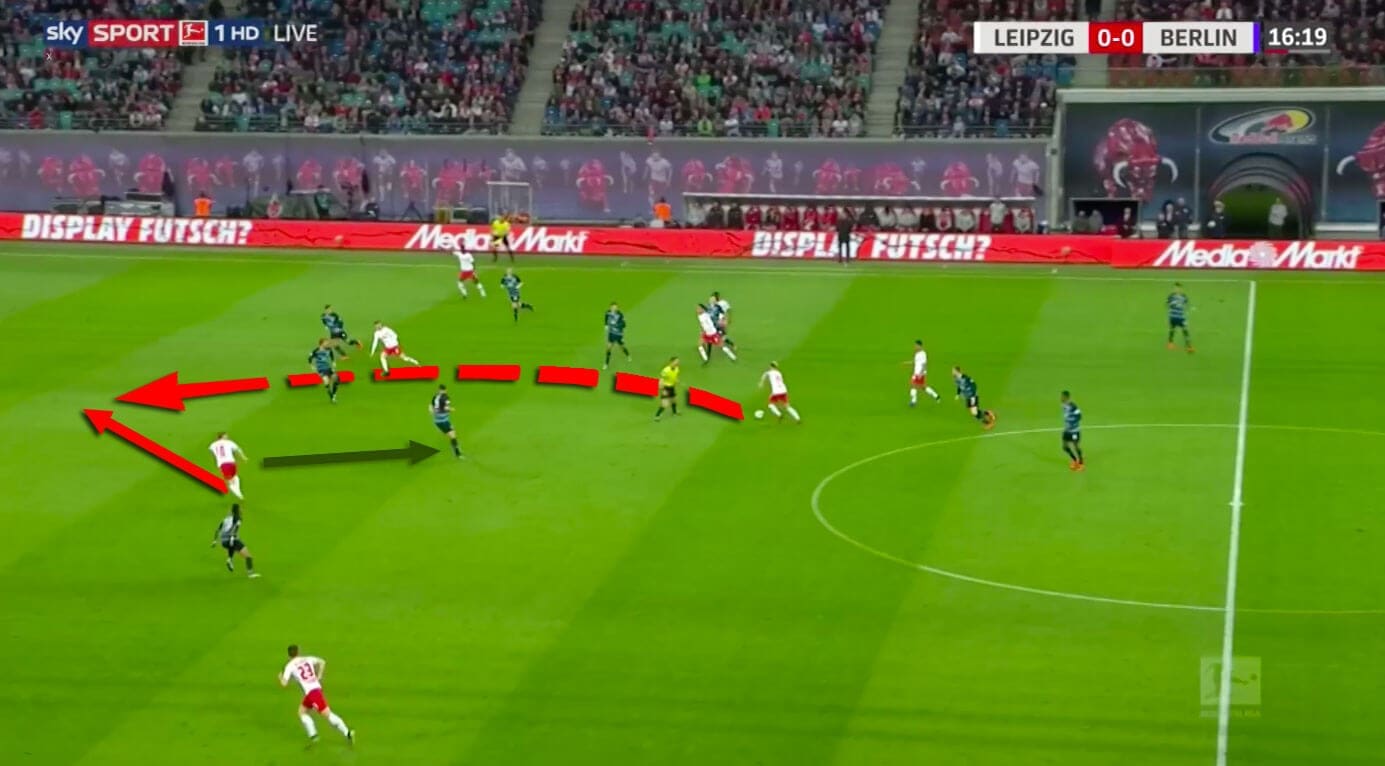
Moreover, Leipzig’s far-side full-back supported the attack when they played the ball back into a central area. Nevertheless, the full-backs did not provide full width, but attempted to directly attack the opposition goal on the most direct way.
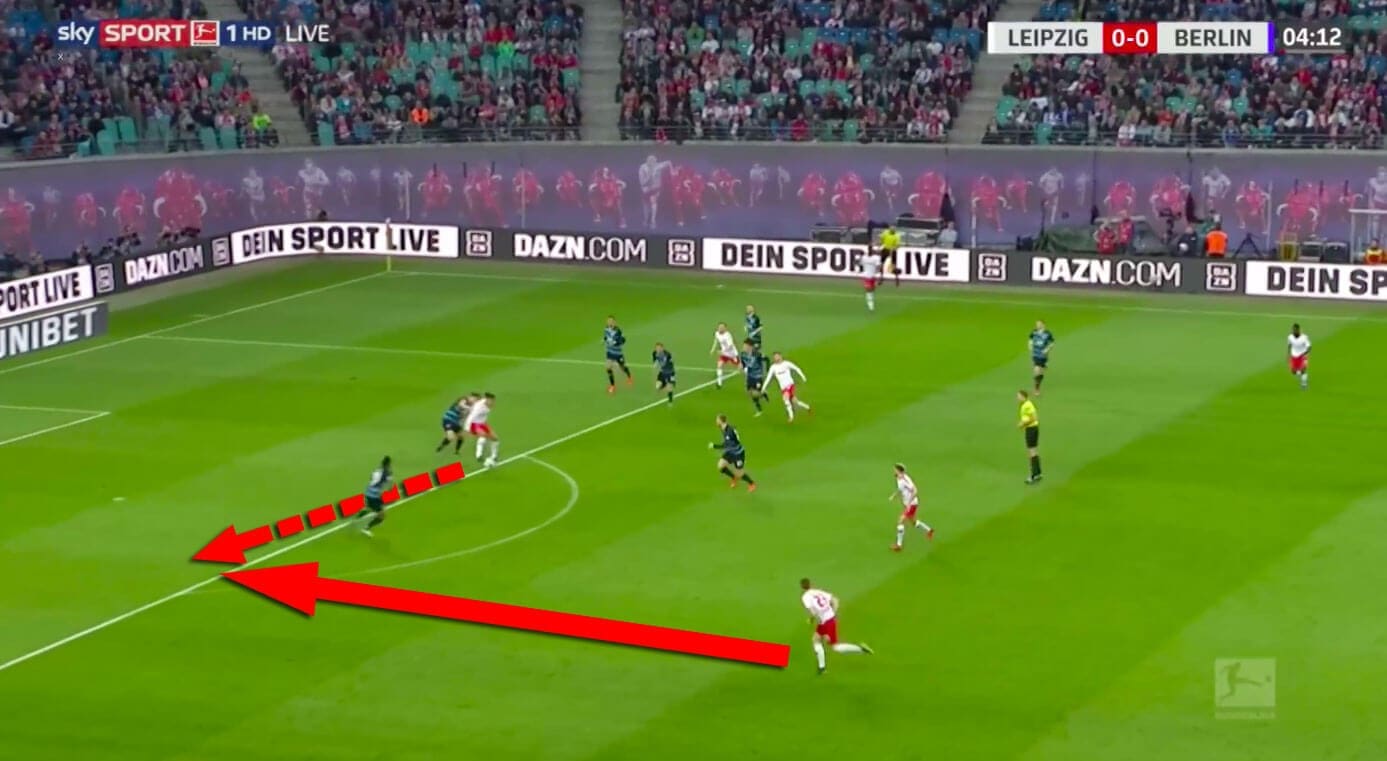
This approach caused Leipzig to not retain much possession but allowed them to still completely dominate their opponents. When building up, advanced midfielder Kevin Kampl dropped into a full-back position while left-back Halstenberg moved up the line. From this position, Kampl could pull the strings as the two pressing attackers of Hertha only prevented the centre-backs from playing out.
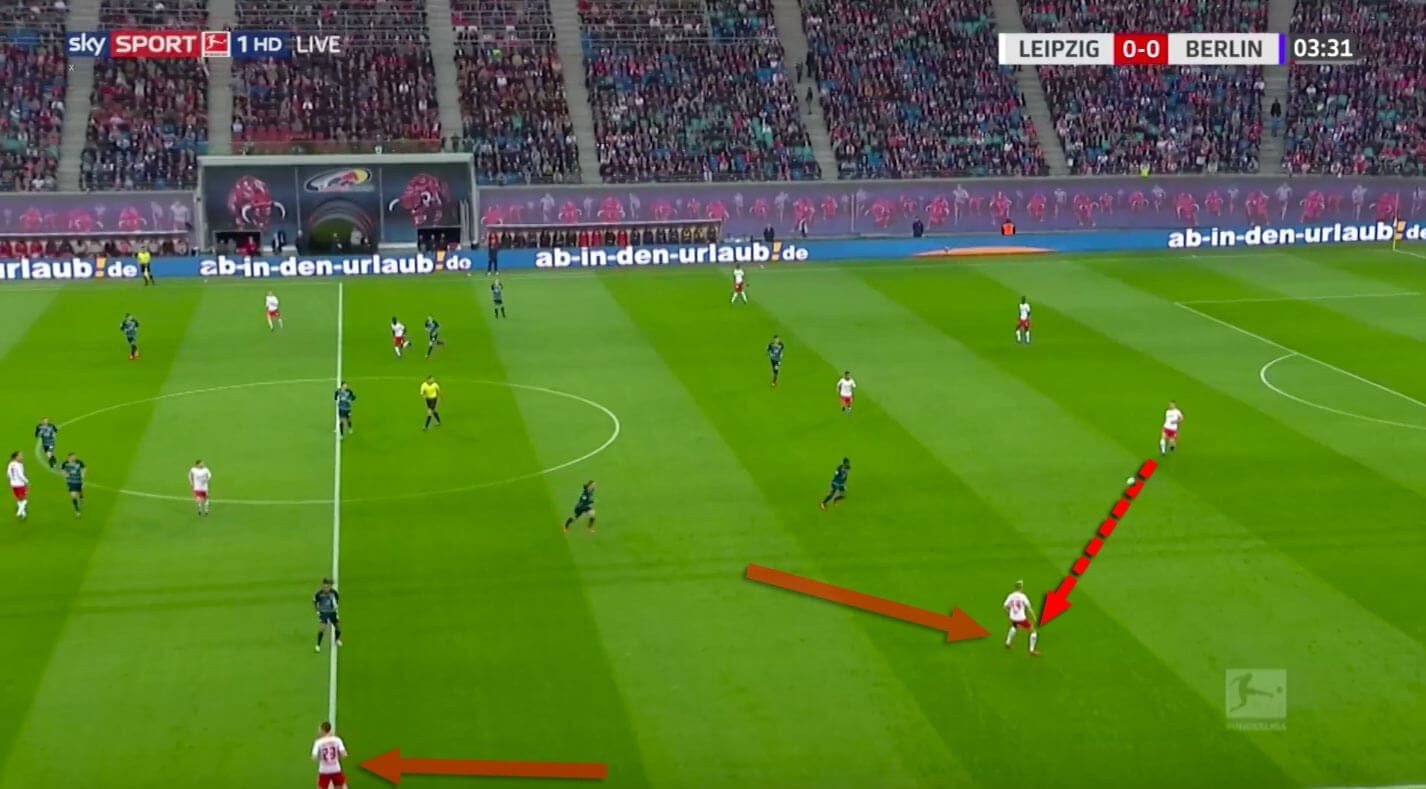
Berlin’s change of system
At the end of the first half, Berlin began to use their wing-backs a bit more frequently. This enabled them to progress up the pitch occasionally. Nevertheless, RB Leipzig managed to prevent Berlin from putting in crosses by outnumbering their players in possession.
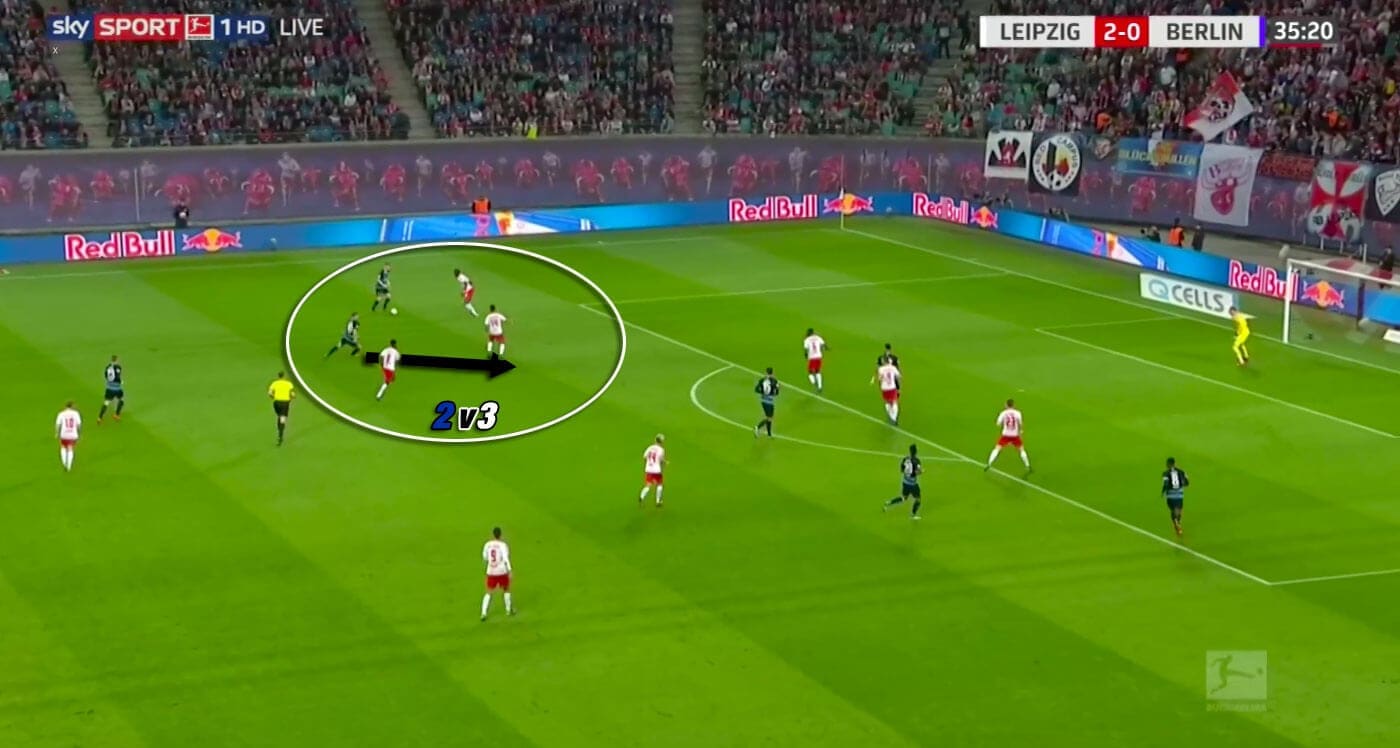
After conceding further goals in the second half, Berlin changed their formation. Dárdai’s side played with a back four from then on. Moreover, the wingers were supposed to lend Hertha more attacking power up front. However, the match was already decided at that stage and the change came way too late.
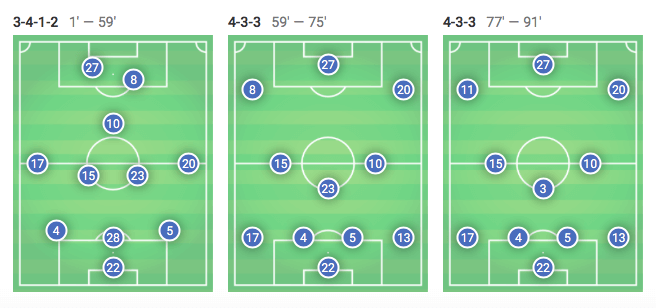
Conclusion
All in all, Leipzig showed their class throughout the whole game. Their man-oriented press prevented Berlin from progressing up the pitch and led to promising counter-attacks. During the attacking phase, Leipzig often penetrated Berlin’s defensive blocks with the creation of overloads and well timed runs into depth. Therefore, Leipzig’s victory was a fully deserved one as the xG values prove.
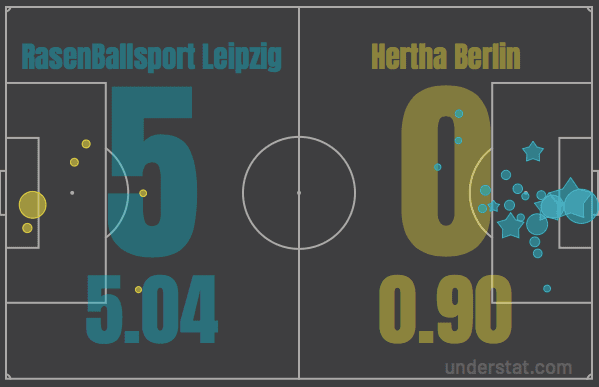
Hertha Berlin mostly missed flexibility in their style of play. Since their centrally-focused attacking did not work against Leipzig’s narrow shape, Dárdai needed other strategies to break the opposition defence. However, Berlin were not capable of finding a promising approach soon enough and therefore did not have the ghost of a chance against Rangnick’s strong Leipzig.
If you love tactical analysis, then you’ll love the digital magazines from totalfootballanalysis.com – a guaranteed 100+ pages of pure tactical analysis covering topics from the Premier League, Serie A, La Liga, Bundesliga and many, many more. Buy your copy of the March issue for just ₤4.99 here, or even better sign up for a ₤50 annual membership (12 monthly issues plus the annual review) right here.

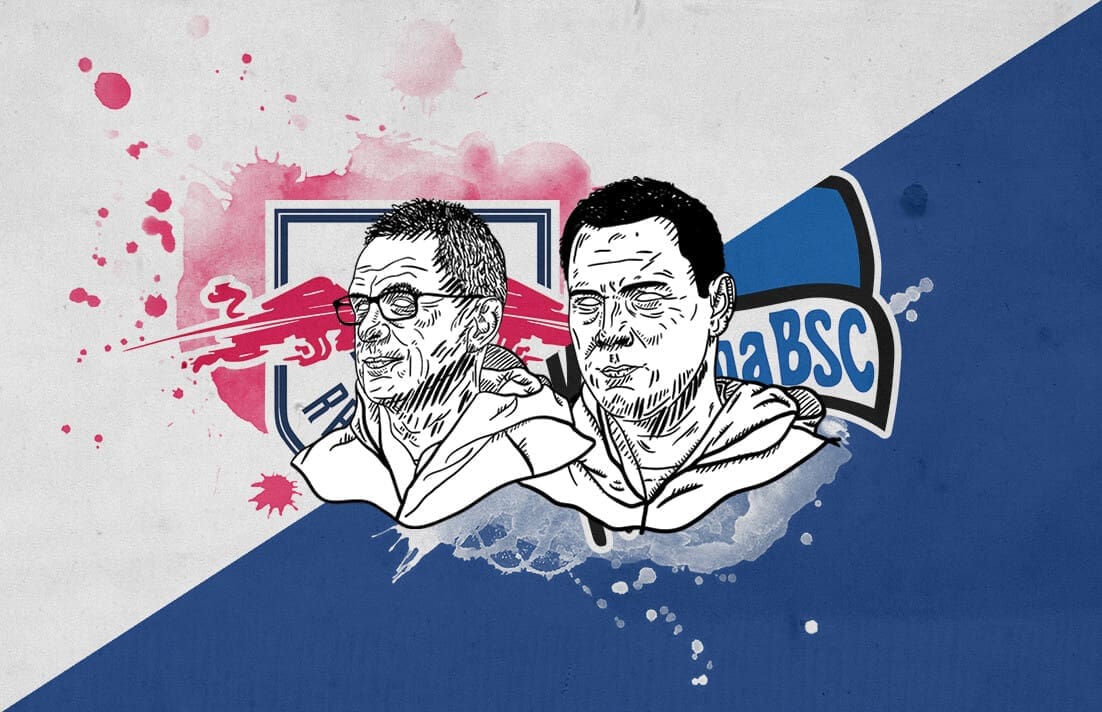



Comments